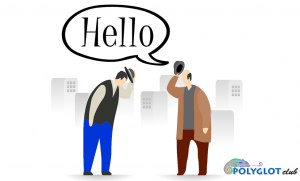Difference between revisions of "Language/Bimin/Vocabulary/How-to-Say-Hello-and-Greetings"
< Language | Bimin | Vocabulary
Jump to navigation
Jump to search
m (Quick edit) |
m (Quick edit) |
||
| Line 49: | Line 49: | ||
*More information on her website: http://users.elite.net/runner/jennifers/ | *More information on her website: http://users.elite.net/runner/jennifers/ | ||
==Free | ==Free Language/Bimin Lessons== | ||
*'''[[Language/Bimin/Grammar|Grammar Lessons]]''' | *'''[[Language/Bimin/Grammar|Grammar Lessons]]''' | ||
Revision as of 21:10, 3 September 2021
🤗 Bimin Greetings for Everyday Life
Hi Bimin learners! 😃
Do you want to learn how to say “Hello” in Bimin?
Greetings are an important part of any language because they allow you to connect and communicate with others.
If you’re planning a trip to the country or are trying to learn Bimin, keep reading to discover some of the most important greetings.
Let’s get started! 🤗
Greetings
| English | Bimin |
|---|---|
| general greeting spoken to one person | Belew yako |
| general greeting spoken to one person | Ken belew yako |
| general greeting spoken to a group | Biliw yako |
| general greeting spoken to a group | Ken biliw yako |
Sources
Polyglot Club thanks Jennifer Runner for her outstanding work in collecting some of the phrases for this Bimin lesson. 👍
Her objective is, like the Polyglot Club, to promote intercultural communication and understanding and to raise awareness of linguistic diversity in the world. ✨
- More information on her website: http://users.elite.net/runner/jennifers/
